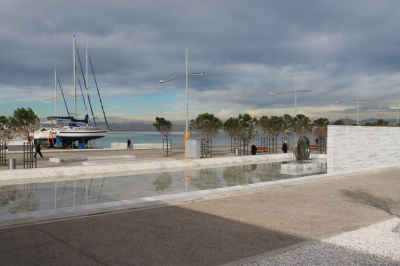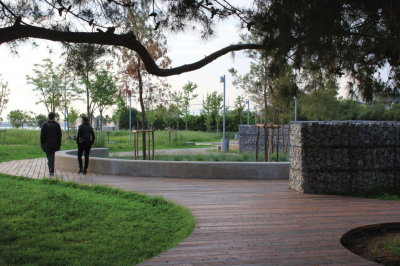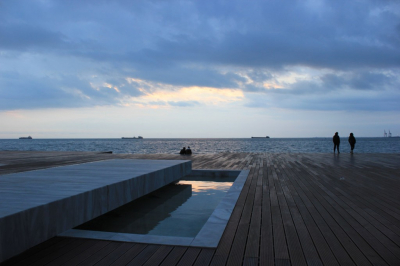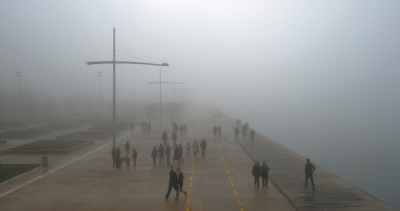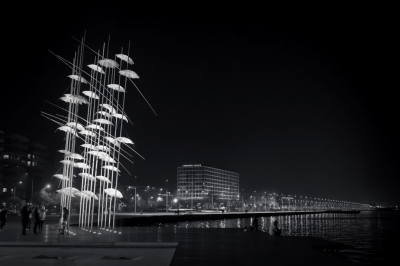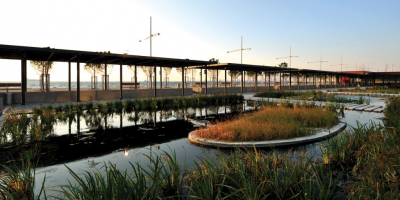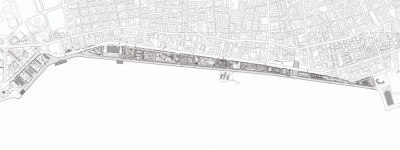Redevelopment of the New Waterfront in Thessaloniki - Second Phase
The New Waterfront of Thessaloniki is a linear place with limited depth and great length, with the characteristics of a front. The project consists of a long walk along the waterfront and 13 green spaces.
In 2000, the Municipality of Thessaloniki launched an International Architectural Competition for the redevelopment of the New Waterfront and in 2006 the construction of the first prize began. The New Waterfront is realized in two phases. The construction of the first part (around 75800m2) was completed in 2008 and of the second part (around 163000m2) started in 2011 and ended in 2014. The total length is 3,5km.
For the New Waterfront, two major characteristic areas are distinguished, which set the principles for the basic choices of the project.
The walk, right above the limit between land and sea, is an ideal place for walking, without interruptions and distractions.
The paving of the coast, from the White Tower to the Concert Hall, is handled unitedly and equally, without hierarchies and alterations to its width. A cast floor is constructed along the waterfront length and all its width. The floor is differentiated at the ending of the breakwater towards the sea by using a wooden deck of bangkirai.
In the inner side of the breakwater, the alternative of a shaded walk is offered. This walk with the proposed sitting-rooms among the trees, is particularly useful during the summer months as an intermediate limit-filter between the two discrete parts of the coast front: the paving and the green zone.
At the opposite side of the linear route, 13 green spaces are formed at the inner side, as a succession of green rooms gardens, each with a special thematic characteristic. Its not about big parks, but rooms of small size that remind of the house gardens that existed in the area and reached the natural seashore, before the landfill of the coast. The gardens are protected spaces and have their own introversion. The differentiation, the possibility of visual isolation, the shading, the surprise, the discovery or the reveal of the different, the game, the soft floors, the green: the gardens follow different ways of synthetic language, glorifying the familiar and the private, creating new collective spaces in a local scale.
The names of the gardens are successively: Garden of Alexander, Garden of the Afternoon Sun, Garden of Sand, Garden of Shadow, Garden of the Seasons, Garden of Odysseas Fokas, Garden of Mediterranean, Garden of the Sculptors, Garden of Sound, Garden of Roses, Garden of Memory, Garden of Water and Garden of Music.
The redevelopment offered people a new urban open space near water with multiple functions with every part accessible by all citizens. People embraced it, created new habits and started participating in the maintenance of the public space.
The design, the choice of materials, the choice of plantation, the lighting, they all contribute not only to the construction of a high quality public space but mainly to the organization of a space that is inscribed smoothly to the existing urban landscape and its management and maintenance do not demand the waste of valuable resources.
More specifically and regarding the electricity consumption, it is worth mentioning that New Waterfront lighting energy management is considered as optimal while there is a reduced consumption during midnight hours. Moreover, apart from reduced water consumption with the lowest possible energy consumption, the irrigation autonomy from the city water supply network is remarkable and the ease in the pinpoint of defaults and failures. Finally, no liquid fossils are exploited for the facilities and therefore there is no relevant pollution.

